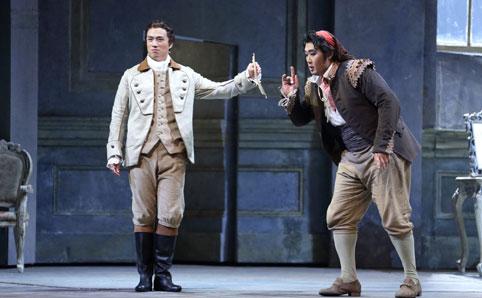 Web Editor: Si Huan
Web Editor: Si Huan


As the NCPA revives one of their best, liveliest, funniest operas, The Marriage of Figaro, Nancy Pellegrini looks at the style, the motivation and the outrageous life of the man who wrote the words.
For all its sweetness and good humour, The Marriage of Figaro was seen as dangerously revolutionary. Based on the dramatic duology by Pierre Beaumarchais that kicked off with The Barber of Seville (1772), Figaro (1784) was temporarily banned in France and permanently proscribed in Austria. Upon seeing the play, a prescient Napoleon remarked, 'It is the revolution already in action.'
To appease the censors, librettist Lorenzo Da Ponte insisted he had removed the controversial content; however, they couldn't foresee Mozart's musical characterisation – light, catchy tunes for the servants, pompous seria parodies for the nobility.
Delighted audiences saw nothing amiss, another credit to the Mozart-Da Ponte team. The entire opera centres around droit de seigneur, a right that allows noblemen to bed their female servants on their wedding nights – a perk Count Almaviva renounces in Barber and regrets in Figaro after spying his wife's new maid. But the sharp Susannah engineers her escape; costumes are donned, machinations ensue and the count is humiliated after accidentally trying to seduce his own wife.
This storyline, with its baiting of the nobility, was politically dangerous, yet the music was (and is) so infectious that few noticed the societal undertones. Figaro was the first large-scale opera featuring real people, and it resonated through the ages.
The Marriage of Figaro is at the NCPA from Thursday 16 January to Sunday 19 January.
Copyright ©1999-2018
Chinanews.com. All rights reserved.
Reproduction in whole or in part without permission is prohibited.